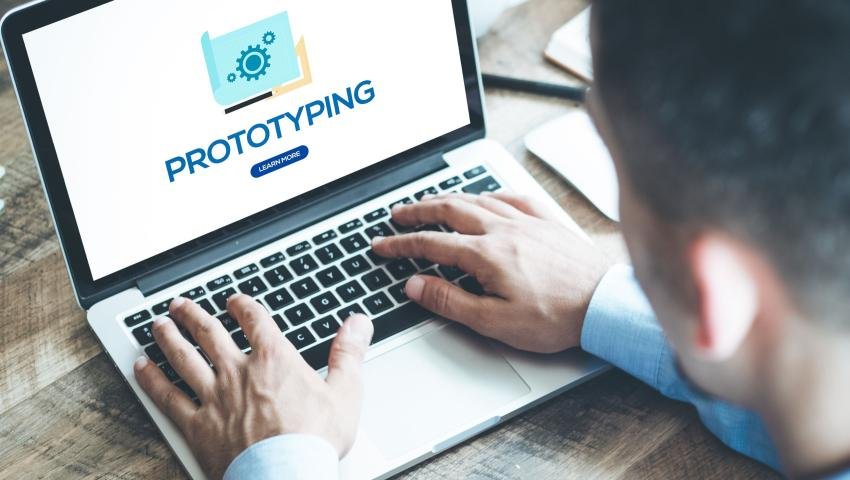
Prototyping: Where Your Ideas Go to Get Real (and Sometimes Fall Flat)
Prototyping is the process of creating an interactive model of a product before it’s fully built. It’s like a rough draft — something you can click, tap, or test to see how the final product might work, without writing the full code or final design.
Prototyping: Where Your Ideas Go to Get Real (and Sometimes Fall Flat)
Let’s just call it like it is — prototyping is the moment you stop talking and start doing .
You’ve pitched the idea, sketched the layout, argued over button colors, maybe even fantasized about how it’s going to change the world.
Cool. But now it’s time to actually build something people can touch . Even if it’s kinda janky. Even if it breaks.
That’s the point.
Prototyping is that moment where you go, “Okay, let’s actually see if this idea holds up in the real world.”
What Even Is a Prototype?
Short answer? It’s a rough, clickable version of your app, site, or product.
Not the final product. Not even close.
But it’s something people can use — or at least fake-use — so you can see if your idea makes sense before you spend real time or money building it.
It’s like a rehearsal for your product. A dress rehearsal with tape, scissors, and hope.
And yes, it’s usually buggy, clunky, and missing 90% of what you eventually want. That’s on purpose .
Why Prototyping Matters (More Than Most People Think)
Because ideas in your head are always perfect.
In your head, the signup flow is seamless. The animations are smooth. The users know exactly where to click. The world loves it.
In reality?
They’re confused. They click the wrong thing. They rage-quit. You realize you forgot the entire onboarding flow.
And that’s amazing. That’s what you want to happen — now. Not after you’ve sunk three months of dev time into building the wrong thing.
A prototype forces reality to show up early.
Low-Fi, High-Fi — Wait, What-Fi?
Okay, quick vocab moment (but I promise not to make it boring):
- Low-fidelity prototype = sketchy, quick, rough. Might just be drawings stitched together. You use it early to see if your idea works—before you sink hours into overthinking every pixel.
- High-fidelity prototype = polished, clickable, looks almost like the final product. Used when you want to test the real feel and flow.
Start lo-fi, go hi-fi once things start clicking. Don’t waste time polishing a prototype no one understands yet.
Tools of the Trade (a.k.a. Where the Magic Happens)
There are tons of prototyping tools, and they’re all basically digital playgrounds. Some favs:
- Figma – King of collaborative prototyping. Click, drag, fake a whole user experience in hours.
- Adobe XD – Clean, fast, and made for clickable mockups.
- InVision – OG prototyping tool with easy linking between screens.
- Marvel, Proto.io, Framer – Great for getting fancy with interactions.
Honestly?T he best tool? It’s the one you’ll actually open, mess with, and stick to—not the fanciest one collecting dust on your desktop.
The “Ohhhhhh” Moment
This is the magic of prototyping:
There’s always this moment when someone clicks through your prototype and goes, “Ohhhhh, I get it now.”
Suddenly the pitch deck makes sense. The sketch turns into a story.
Your team stops arguing and starts building in the same direction.
Prototypes turn abstract ideas into shared understanding . They’re the translator between “founder speak,” “designer speak,” “dev speak,” and “user speak.”
And Yes, Prototypes Sometimes Blow Up
Let’s not romanticize it — not all prototypes are graceful. Some are barely functional. Some crash. Some confuse your testers more than they help.
But that’s the point .
A prototype that fails early saves your future self so much pain . It shows you what doesn’t work — fast, cheap, and in a way that nobody loses sleep over.
Real Talk: When to Prototype
Honestly? Sooner than you think.
You don’t need a full design. You don’t need every screen. Sometimes a 3-screen clickable flow is enough to get useful feedback. You can literally prototype with sticky notes and a Sharpie if it helps you explain the concept better.
The rule: Don’t wait until you’re “ready.” Start when you’re curious.
TL;DR?
- Prototyping isn’t about perfection. It’s about testing fast, failing smart, and learning early.
- Don’t get caught up making it pretty — just make it real enough to feel.
- The earlier you prototype, the more mistakes you catch before they get expensive.
- A good prototype is worth more than 10 meetings.
Final Thoughts: Prototypes Are Messy. And That’s Beautiful.
Look — prototyping isn’t about impressing people. It’s about understanding what works .
It’s about building the bridge between what’s in your head and what users actually want.
And if you embrace the mess early, you build smarter, faster, and with way fewer “oh crap” moments later.
So if you’ve got an idea rattling around in your brain, stop sitting on it.
Prototype it. Click it. Break it.
Then build it for real — better than you ever could have the first time.
Rukhsar Jutt
Leave a comment
Your email address will not be published. Required fields are marked *

